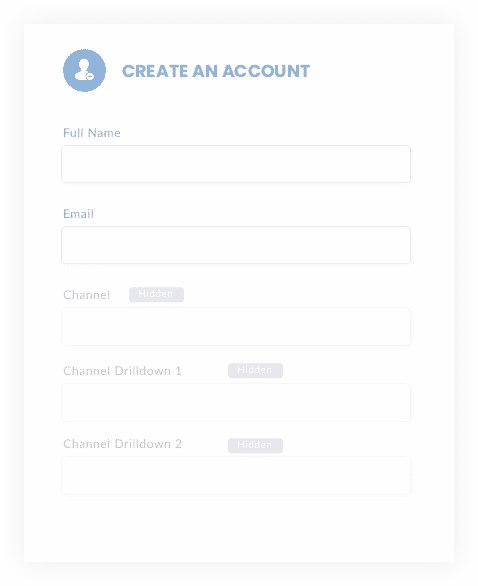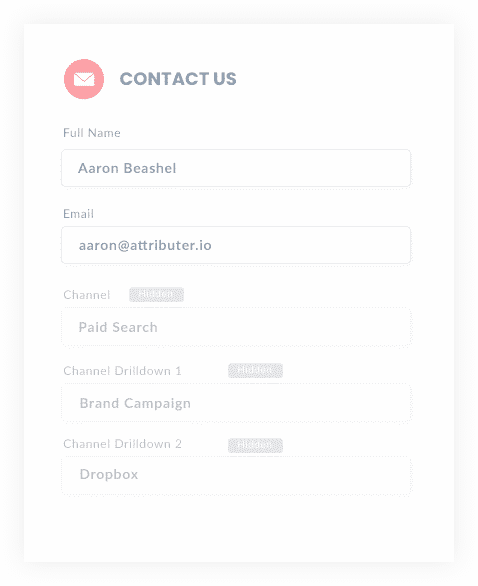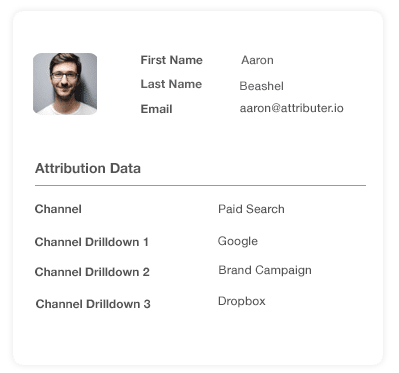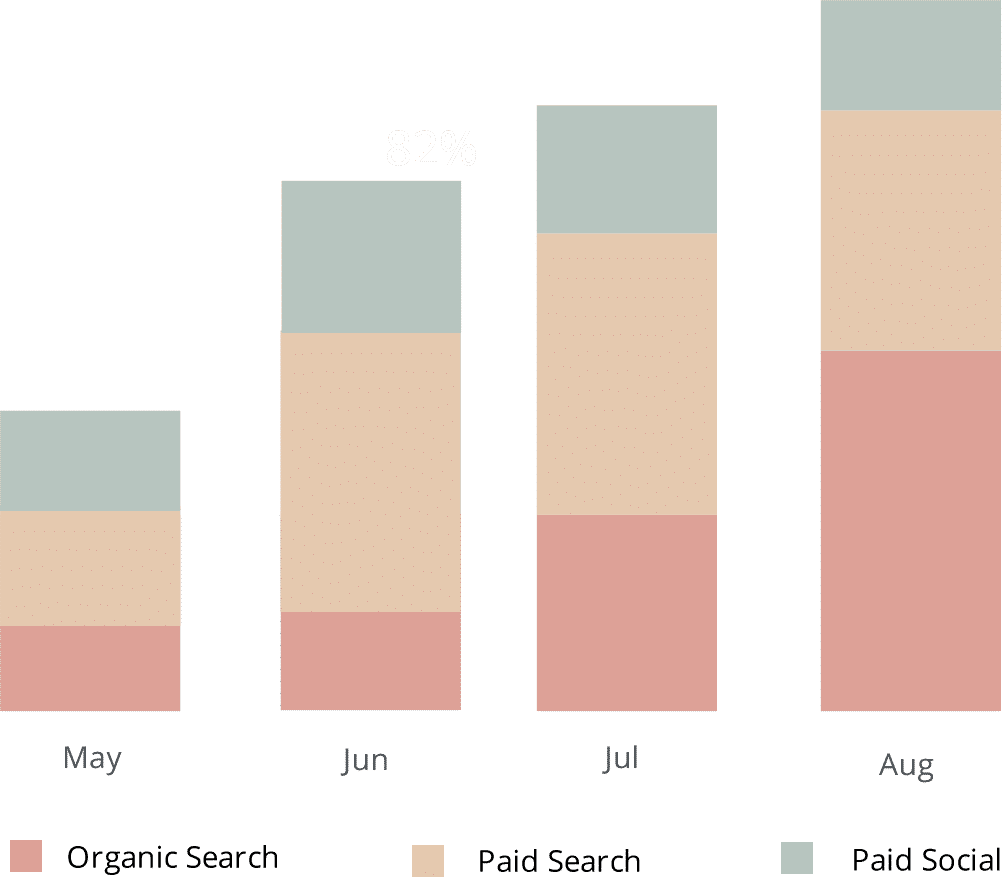Integrate Google Analytics data with SaaSOptics in 4 steps
Integrate Google Analytics data, such as channel and landing page information, into SaaSOptics so you can run reports that show you where your signups, customers and revenue come from.

Knowing the marketing channels and campaigns that bring the majority of your revenue, customers, and sign-ups is an excellent habit that can reap benefits for your business.
One of the most exceptional tools to help you with this is Google Analytics. However, it cannot tell you which of these visitors have turned into customers, the amount they paid, their lifetime value, how frequently they churn, etc.
To have this type of information, you need to have Google Analytics inside your billing platform so you can organise your revenue reports by channel or campaign.
Don't fret if you have no idea how to do this, as this article will teach you how you can use Attributer to pass the Google Analytics data to SaaSOptics.
What is Attributer?
When you get right down to its most basic form, Attributer is a small snippet of code that you insert into your website.
Each time a visitor lands on your site, Attributer scans some technical information to figure out where this visitor came from. It then categorises each visitor into the channel they came through like referral, direct, paid search, organic social, etc.) This channel information is then stored in a cookie in the visitor's browser.
In the circumstance that a visitor signs up for your product, Attributer sends this channel information and the lead details into SaaSOptics.
This data can then be used in SaaSOptics to answer questions like:
- How many customers have been generated by my LinkedIn ads?
- What's the average MRR of customers from my Twitter ads vs. customers from my Facebook ads?
- What's the churn rate of customers from organic Google searches?
Integrate Google Analytics data and SaaSOptics in 4 steps
Using Attributer to connect Google Analytics data with SaaSOptics is easy. Here's how to do it in 4 easy steps:
1. Include hidden fields in your forms

First up, add hidden fields to your sign-up forms. These hidden fields include:
- Channel
- Channel Drilldown 1
- Channel Drildown 2
- Channel Drilldown 3
- Landing Page
- Landing Page Group
The other option is to write a simple piece of javascript to pull the data from the cookie and send it through to SaaSOptics when a user completes a signup form. This is handy if you have Google or Facebook signup options where a user can create an account without actually completing a form. For more information on this, check out this help article.
2. Fill hidden fields with Google Analytics data

Attributer looks at where your visitors come from and once they complete a form on your website, it populates the hidden fields you added to your form with Google Analytics data.
As an example, if I was a marketer at Hubspot and a visitor came to my website from a brand campaign in paid search, it would populate the hidden fields as follows (depending on the UTM parameters I used behind my ads):
- Channel = Paid search
- Channel Drilldown 1 = Google
- Channel Drildown 2 = Brand campaign
- Channel Drilldown 3 = Hubspot
On top of the information on channel, it would also capture the visitor's first landing page (i.e. hubspot.com/blog/best-cms-software) and the first landing page group (i.e. /blog)
3. Google Analytics data appears in SaaSOptics

The moment a visitor submits a form on your website, the Google Analytics data stored in the cookie is passed into SaaSOptics together with the other data entered in the form (e.g: the lead's first and last names, email address, company, etc.)
4. Run reports to understand which channels are driving leads, customers and revenue

What data gets passed into SaaSOptics?
At Attributer, we have come to find that there are two essential factors to marketing attribution:
- Channel - How did your visitors arrive at your website? Usually one of paid social, paid search, referral, organics search, etc.
- Landing page - What part or content did they resonate with that led them to your site? It could be your blog, features pages, eBooks, etc.
Knowing how important these are, we have built Attributer to aid you in reaching answers to these questions. Attributer collects all the information you need to determine the queries above.
1. Marketing channel data
Attributer systematically captures the channel information where your lead has come from (i.e., paid search, organic search, paid social) along with additional detail on each channel. For instance, when it comes to paid search, it also captures keywords, ad group, campaign, etc.)
2. Landing page data
Attributer regularly collects the first page the lead sees on your site (i.e., dropbox.com/blog/best-file-storage-tools) along with the page's category (e.g: blog).
This information is useful when viewing related content on your site as one entity. For example, you will be able to see how many leads your entire blog section has generated and drill down into the number of each blog post's generated leads and customers.
What you can do with all this data?
The moment when the Google Analytics data is inside SaaSOptics, it can be beneficial in several ways:
1. Report on channels
Having Google Analytics data inside SaaSOptics will allow you to create reports that provide insights to questions like:
- How many signups did you get from your Google ads?
- What's the signup-to-customer conversion rate of leads from your Google ads?
- How many customers have been generated by your Google ads?
- How much MRR or ARR has been generated by your Google ads?
- What's the lifetime value of customers that came from your Google ads, and how does that compare to other channels?
- What's the overall ROI of your Google ads (spend/revenue generated)?
You can run reports using SaaSOptics's native reporting features or pass the data to any analytics and business intelligence tools that integrate with SaaSOptics to run more in-depth reports there.
2. Report on content
Since Attributer collects data about your visitors' landing page and landing page group, you can also create reports showing how your website's content is performing.
Take, for example, you can build reports that provide you answers to questions like:
- How many sign-ups did I get from my blog?
- Which blog posts have got me the most sign-ups?
- Which blog posts are converting people into customers?
- What is the ROI of my blogging efforts?
Moreover, you can also view how specific parts of your site perform when it comes to conversion rate through to customer. So, for example, you may find out that while your blog section is attracting a lot of visitors and plenty of sign-ups, only a very few are actually turning into customers. With this information, you may continue blogging or focus your time and resources elsewhere.
Wrap up
If you've been trying to get Google Analytics data into SaaSOptics, then Attributer can help you.
Setting it up is straightforward, and once it's up and running, it will let you build comprehensive reports and dashboards inside SaaSOptics. These reports and dashboards can provide you insights regarding the performance of your content, SEO efforts, advertising campaigns, and more.
The best part is it is free to try. Experience and find out if Attributer fits your needs by starting your free trial today.
Get Started For Free
Start your 14-day free trial of Attributer today!

About the Author
Aaron Beashel is the founder of Attributer and has over 15 years of experience in marketing & analytics. He is a recognized expert in the subject and has written articles for leading websites such as Hubspot, Zapier, Search Engine Journal, Buffer, Unbounce & more. Learn more about Aaron here.
